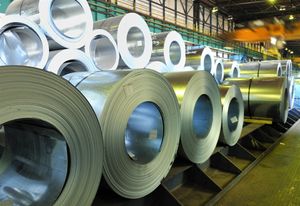
Consumer products giant Procter & Gamble said Friday that it was upping its goals on to tame greenhouse gas emissions, aiming to reduce Scope 1 and 2 emissions 65% by 2030 compared to a 2010 baseline, an increase from its previous goal of 50%.
In a blog post on the company’s website posted Aug.1 the company reiterated its goal to achieve net zero greenhouse gas emissions across its supply chain and operations from raw material to retailer by 2040.
“We see sustainability as a strategic way to help future-proof our operations and operate an agile, thriving business,” the company said in the post.
The post addresses 9 top questions about P&G’s PG climate action and how it is working toward net zero goals alongside its partners.
1. What is P&G’s net zero commitment?
P&G’s ambition is to achieve net zero GHG emissions across our supply chain and operations — from raw material to retailer — by 2040. Our climate journey began over a decade ago, focusing initially on our manufacturing facilities. We have since broadened our work; our ambition spans sourcing materials to transporting finished products to stores.
2. What steps is P&G taking to reduce greenhouse gas emissions?
Our strategy focuses on significantly reducing absolute GHG emissions in our operations and supply chain. By 2030, we aim to reduce our Scope 1 and 2 emissions by 65% compared to a 2010 baseline, an increase from our previous goal of 50%.
3. How does waste reduction fit into P&G’s climate strategy?
Waste reduction is a vital part of our climate strategy. By aiming to design all consumer packaging to be recyclable or reusable by 2030, we aim to minimize waste while reducing the overall environmental impact of our products. We’re also working to reduce our use of virgin petroleum plastic in our consumer packaging by 50% per unit of production versus a 2017 baseline.
4. How is P&G using renewable energy?
We are working toward purchasing 100% renewable electricity by 2030, with more than 99% of our electricity already sourced from renewable sources globally. This transition is essential for reducing our carbon footprint.
5. How does P&G plan to tackle emissions in its supply chain?
We are focused on improving transportation efficiency and collaborating with suppliers to reduce their carbon footprints. Our ambition is to reduce supply chain emissions by 40% per unit of production vs. 2020 baseline. For example, we are investing in projects with key suppliers that have the potential to reduce several million metric tons of CO2 over the next decade through a range of advanced technologies.
6. Does P&G use offsets as part of its climate strategy?
Our top priority is to reduce absolute greenhouse gas emissions. We have accelerated our efforts here and will continue to invest in new solutions to drive reductions further. We acknowledge that nature is a powerful solution today that can reduce CO2 in the atmosphere. That’s why, for emissions we cannot eliminate, we will explore natural or technical solutions to remove an equivalent amount of GHG emissions from the atmosphere.
7. What challenges does P&G face in its climate journey?
We realize there’s a need for new technologies and comprehensive consumer education to help reduce the impacts of climate change. We view these challenges as opportunities for growth and innovation, and we are committed to learning and adapting as we move forward. P&G is committed to helping people reduce their environmental impact at home when they use our products and partnering to scale industry-wide solutions that will benefit everyone.
8. How can consumers contribute to P&G’s climate efforts?
We are committed to improving people’s lives with innovation that delivers superior performance and is more sustainable. Consumers can play an important role by making small changes in their daily routines, such as using cold water for washing clothes to reduce energy consumption.
9. How can we track P&G’s progress toward its climate goals?
P&G is dedicated to transparency and will share updates on our progress toward net zero through our ESG Investor portal and in our Citizenship Report.
Read more: Renewables outshining fossil fuels





